
none
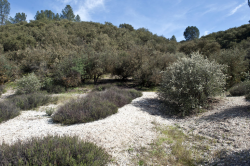
San Antonio collinsia (Collinsia antonina) habitat, southern Monterey County. Several hundred plants in flower on shale slope, April 4, 2013. Photo © 2013 Chris Winchell.
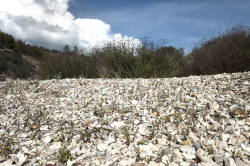
San Antonio collinsia (Collinsia antonina) habitat, southern Monterey County. Several hundred plants in flower on shale slope, April 4, 2013. Photo © 2013 Chris Winchell.
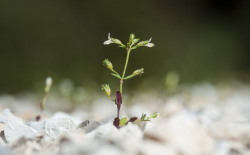
San Antonio collinsia (Collinsia antonina) growth habit, April 4, 2013. Photo © 2013 Chris Winchell.
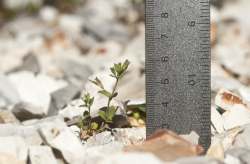
San Antonio collinsia (Collinsia antonina) growth habit, April 4, 2013. Photo © 2013 Chris Winchell.
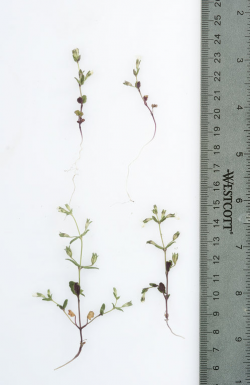
San Antonio collinsia (Collinsia antonina) growth habit, April 4, 2013. Photo © 2013 Chris Winchell.
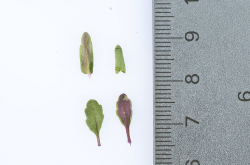
San Antonio collinsia (Collinsia antonina) leaves, April 4, 2013. Photo © 2013 Chris Winchell.
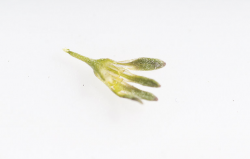
San Antonio collinsia (Collinsia antonina) calyx, April 4, 2013. Photo © 2013 Chris Winchell.



This fact sheet was prepared by Dylan M. Neubauer under award NA04N0S4200074 from the National Oceanic and Atmospheric Administration (NOAA), U.S. Department of Commerce (DOC). The statements, findings, conclusions, and recommendations are those of the authors and do not necessarily reflect the views of the NOAA or the DOC.
© Copyright 2006, Elkhorn Slough Coastal Training Program
Last updated: Oct 2, 2018 09:33
Common Names - San Antonio collinsia
Family - Plantaginaceae (Plantain Family)
State Status - none
Federal Status - none
Habitat
Openings and depressions in mesic margins of oak scrub; on stable siliceous shale gravel, scree, talus, ledges, or in loam; generally on north-facing slopes in sun or part shade; < 250–400 m (CNPS 2010, Park and Neese 2012, CCH 2018, CNDDB 2018).
Key Characteristics
Annual herb, to 15 cm, sparsely branched at base. Leaves opposite, oblong, crenate, longest 5–10 mm, lower petiolate, upper ± sessile. Inflorescence open, generally sparsely glandular; pedicels 1–3 per node, equal, >> calyx. Inner face of calyx lobes white-hairy, calyx lobe tips ± blunt; corolla 4.5–8 mm, throat white with reddish-purple spots below upper lobes, lobes purple, rarely white. n=7 (Hardham 1964, Park and Neese 2012).
Flowering Period
March to April
Global Distribution
Endemic to the Santa Lucia Range, Outer South Coast Ranges (SCoRO), in southern Monterey County.
Discussion
Collinsia antonina was described by Clare B. Hardham (1) in 1964, based on her 1964 type collection from the Santa Lucia Range in southern Monterey County (#11012) “on siliceous shale on the northern slopes of the hills.” Hardham (1969) suspected that the rare C. antonina might be closely related to similar-looking C. parryi Gray, a wide-ranging southern California species, also with n=7 (2). She posited that C. antonina was “an outlier of a southern species persisting after the post-glacial warm period as a relict in the ... Santa Lucia Range, ... represent[ing] one of the few cases in which evolution has ... separate[d] the northern relict and the main southern populations into two distinct species.”
Hardham recognized two subspecies (antonina and purpurea) that occupied the same microhabitat but rarely occurred together—though, “on ... rare occasions when the two ... are sympatric,” formed hybrids. She distinguished them as follows: subsp. antonina with “corolla white, red-spotted at base of upper lobes,” and the corolla-tube ca. 1 mm < calyx, and subsp. purpurea with “corolla ... purple with a red-spotted, white area at the base of the upper ... lobes,” and the calyx “slightly shorter ... than the corolla-tube.”
Though Munz (1968) treated C. antonina and C. parryi separately (as “close relatives”) (Baldwin and Armbruster 2002), the1993 treatment in The Jepson Manual (Neese) did not recognize C. antonina, lumping it with the more widespread C. parryi A. Gray.
A 2002 molecular study (Baldwin and Armbruster) found that “members of C. parryi sensu stricto ... appear to be more closely related to members of C. concolor Greene ... than to members of C. antonina.” As “major shifts in flower size have occurred repeatedly throughout the evolutionary history of Collinsia,” the researchers posited that “small flower size may be a shared, ancestral characteristic of C. antonina and C. parryi, with large flowers being a derived feature of C. concolor.” Based on the “molecular and morphological evidence,” they concluded that C. antonina warranted recognition “as a distinct species,” but did not address the infraspecific taxa recognized by Hardham.
An in-depth phylogenetic analysis of the genus Collinsia was published in 2011 (Baldwin et al.). Corroborating the results of the 2002 study, this work found that “the small-flowered, southern California C. parryi ... is more closely related to the large- and ‘sessile-flowered,’ southern California C. concolor than to the small- and pediceled-flowered central California C. antonina.”
“Nested placement of C. parryi within ... C. concolor lineages” led the authors to conclude that “the small- and pediceled-flowered C. antonina and C. parryi ... probably represent independent shifts to a small-flowered state, with C. concolor retaining an ancestrally large- and sessile-flowered condition rather than being an example of a small- to large-flowered shift.”
In addition, they determined that pediceled flowers are “unequivocally ancestral in Collinsia ... and probably evolved secondarily from a sessile-flowered state in C. antonina and C. parryi, which are nested within the otherwise mostly sessile-flowered clade and are resolved here as the two closest relatives of the sessile-flowered C. concolor.”
The study once again confirmed the narrow endemism and rarity of C. antonina. An “edaphic endemic, [C. antonina is] known only from isolated populations on semibarren exposures (of siliceous-shale talus).” Edaphic endemics are common in California, and in Collinsia include “C. antonina, C. corymbosa, and the C. ‘metamorphica’ complex.” Rather than being “of relatively recent origin compared to more widespread taxa ... none of these narrow endemics is nested ... within another taxon and each belongs to a stem lineage that diverged prior to closely related taxa that are not as geographically restricted.”
In Phylogeography of California: An Introduction (2014), Kristina A. Schierenbeck discusses this lineage, stating: “Bayesian analyses of molecular data indicate that a Transverse-southern Coast Range split occurred ... between C. antonina (s Coast Ranges) and C. concolor/ C. parryi (Transverse and Peninsular Ranges ) 3.2-1.2 Ma, all of which are consistent with late Pliocene through Pleistocene uplift and climate change.”
Conservation and Threats
Limited to eight presumably extant occurrences, five of which occur on the U.S. Army Hunter-Liggett Military Base. Though the species has been poorly surveyed for, known threats on the base include grazing, foot-traffic, and trampling. Two occurrences are on private land where owners have been known to use bulldozers in areas where the plants occur. The remaining occurrence, with ownership unknown, requires fieldwork to document current conditions. Other possible threats include grazing and road maintenance (CNPS 2011). In addition, small populations are vulnerable to random, stochastic events.
Reviewer
Nicole Nedeff, Biological Consultant (September 2018)
Footnotes
1. Clare B. Hardham (1918–2010) was a Paso Robles botanist who collected widely in the South Coast Ranges during the 1950s and 1960s.
2. Hardham (1964) stated: “At present these two species are quite distinct, since, although both n=7, C. parryi has never been found to have more than 5 closed pairs at meiosis while C. antonina has 7 closed pairs. Garber [1956] considers chiasma frequency to be a valid cytotaxonomic character by which to separate species in the genus Collinsia.”
References
Armbruster, W. S., C.P.H. Mulder, B. G. Baldwin, S. Kalisz, B. Wessa, and H. Nute. 2002. Comparative analysis of late floral development and mating-system evolution in tribe Collinsieae (Scrophulariaceae s. l.). American Journal of Botany 89:37–49.
Baldwin, B. G. and W. S. Armbruster. 2002. Note: Collinsia antonina is evolutionarily distinct from C. parryi (Scrophulariaceae sensu lato). Madroño 49(4)295–297.
Baldwin, B. G., S. Kalisz, and W. S. Armbruster. 2011. Phylogenetic perspectives on diversification, biogeography, and flora evolution of Collinsia and Tonella (Plantaginaceae). American Journal of Botany 98(4):731–753.
California Native Plant Society (CNPS), Rare Plant Program. 2018. Collinsia antonina.Inventory of Rare and Endangered Plants (online edition, v8-03 0.39) [treatment last updated 2011]. California Native Plant Society, Sacramento, CA. http://www.rareplants.cnps.org/detail/610.html [acc. 13 Aug 2018].
California Natural Diversity Database (CNDDB). 2018. [Internet]. California Department of Fish and Wildlife [acc. 13 Aug 2018].
Consortium of California Herbaria (CCH). 2018. [Internet]. [acc. 13 Aug 2018].
Garber, E. D. 1956. The genus Collinsia I: chromosome number and chiasma frequency of species in the two sections. Botanical Gazette117:73–76.
Hardham, C. 1964. A new Collinsia from Monterey County, California. Leaflets of Western Botany 10:133–135.
Kalisz, S., A. Randle, D. Chaiffetz, M. Faigeles, A. Butera, and C. Beight. 2012. Dichogamy correlates with outcrossing rate and defines the selfing syndrome in the mixed-mating genus Collinsia. Annals of Botany 109:571–582.
Munz, P. A. 1968. Supplement to a California Flora. University of California Press, Berkeley, CA.
Neese, E. C. 1993. Collinsia. Pp. 1024–1027, in J. C. Hickman, ed., The Jepson Manual: Higher Plants of California. University of California Press, Berkeley, CA.
Newsom, V. M. 1929. A revision of the genus Collinsia. Botanical Gazette 87:260–301.
Park, M. S. and E. C. Neese. 2012. Collinsia antonina, in Jepson Flora Project (eds.) Jepson eFlora, http://ucjeps.berkeley.edu/eflora/eflora_display.php?tid=19987 [acc. 13 Aug 2018].
Schierenbeck, K. A. 2014. Phylogeography of California: An Introduction. University of California Press, Oakland, CA.
